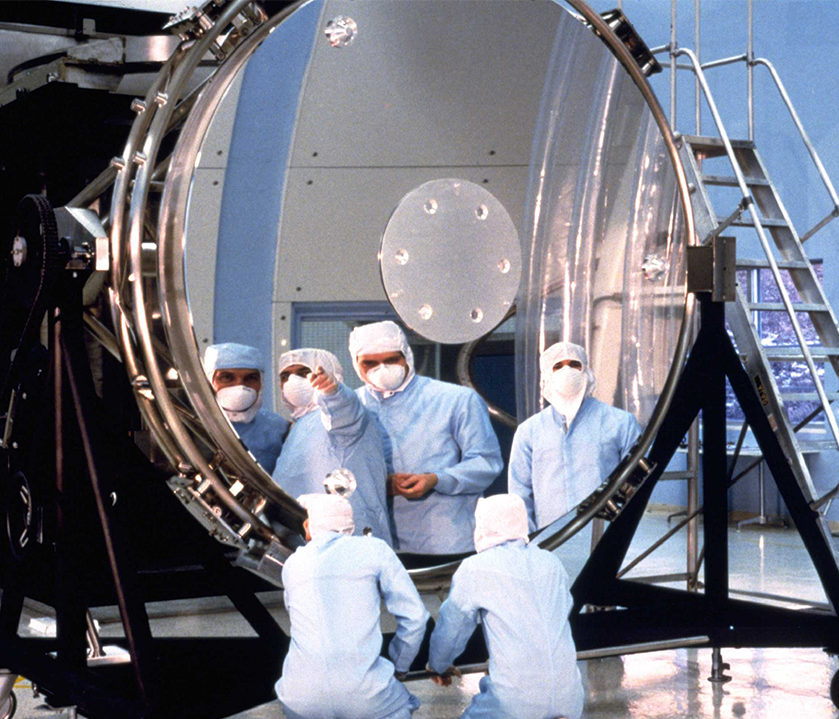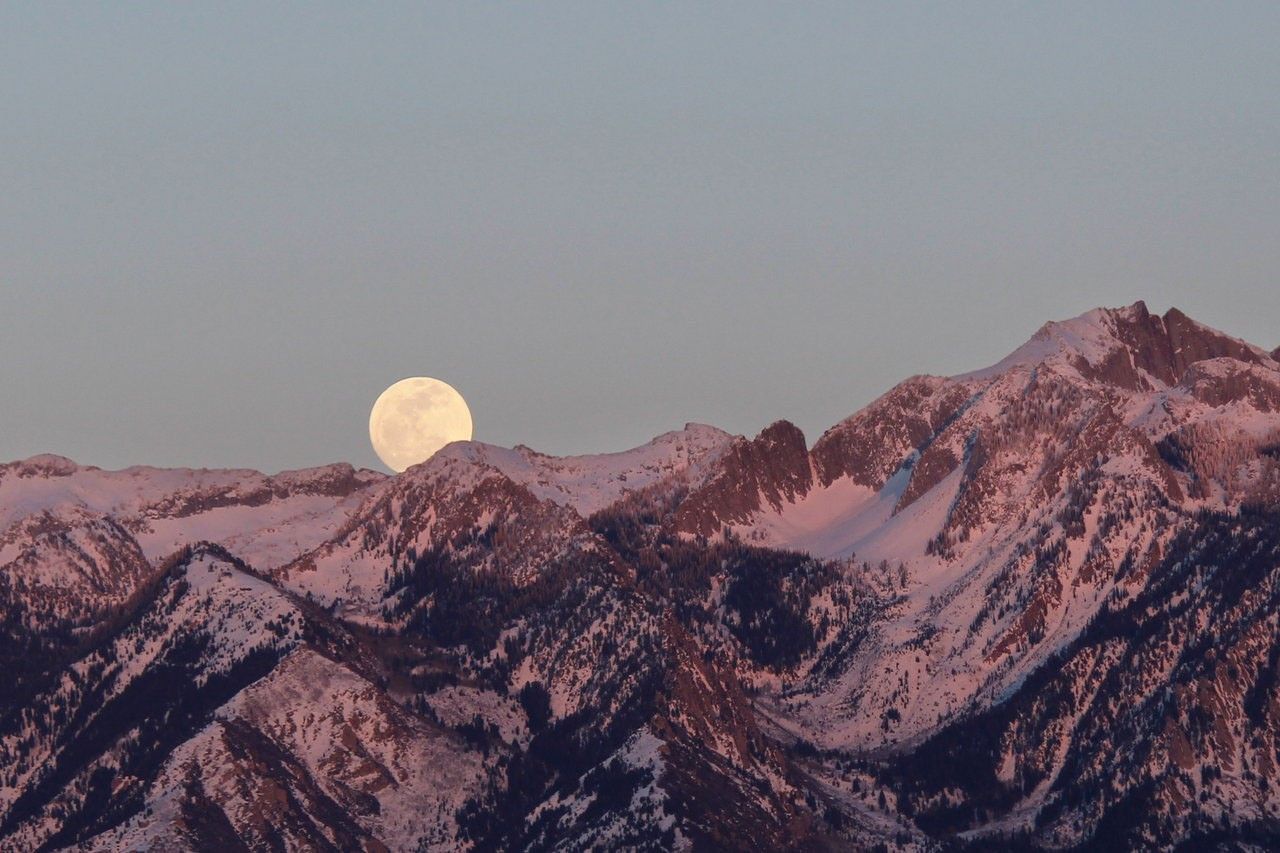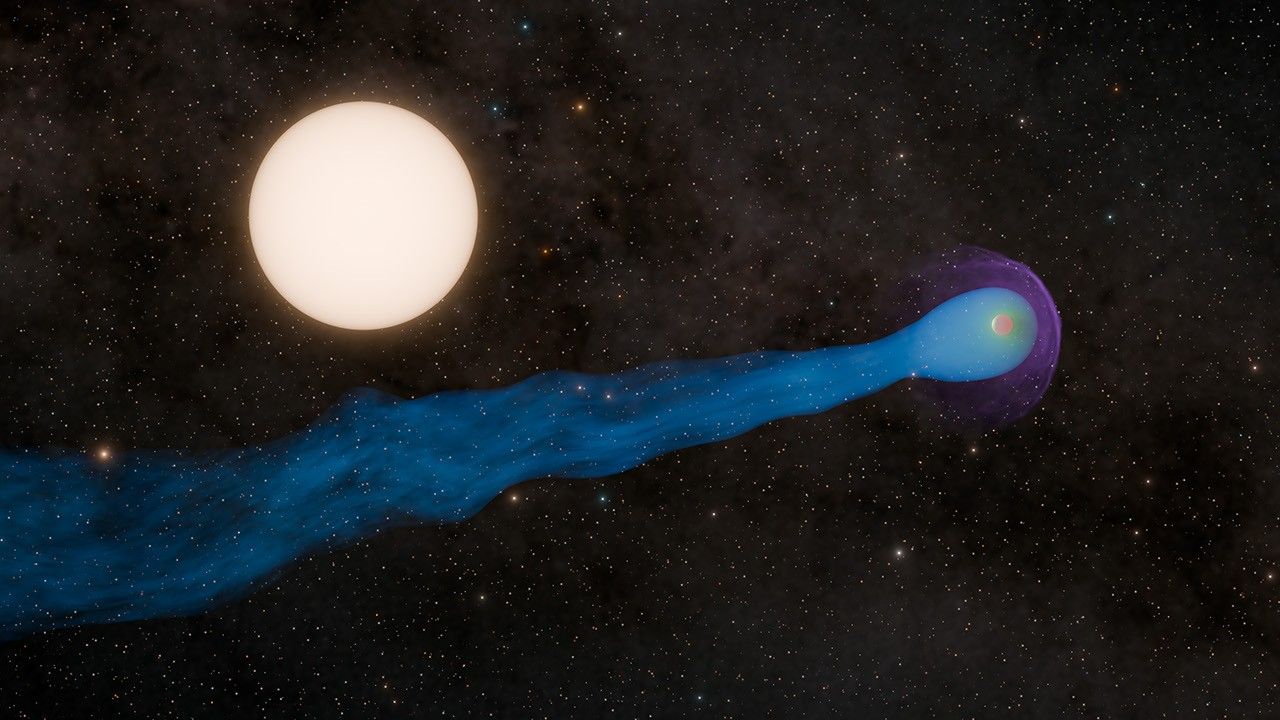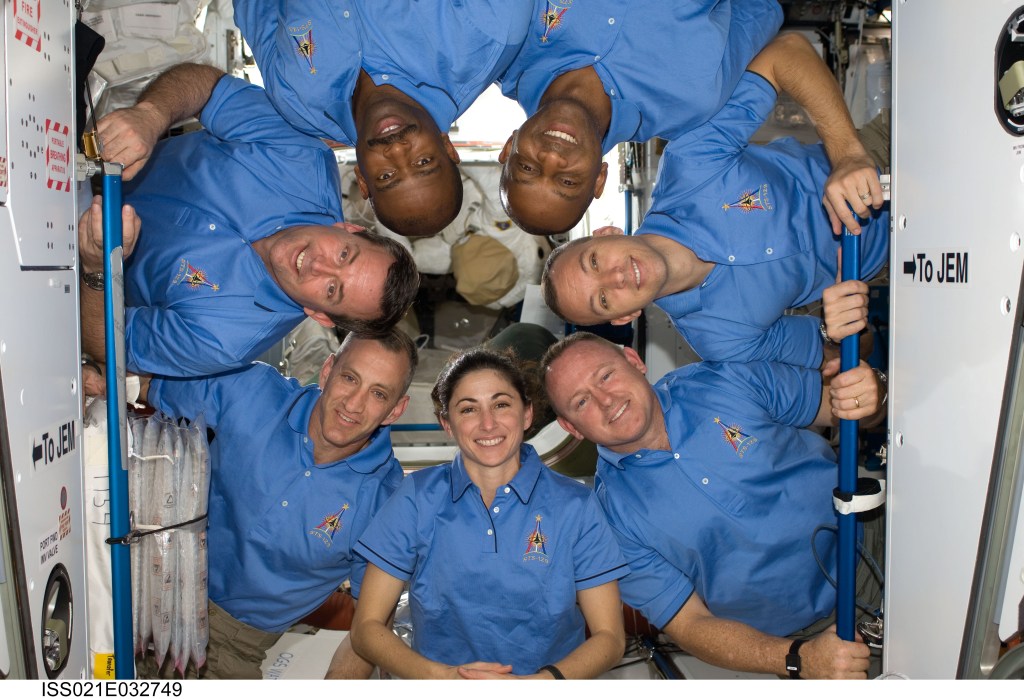
STS-61
Hubble Space Telescope Servicing Mission (SM1)
orbiter
mission duration
Launch
Landing

STS-61 Mission Facts
Launch Pad: 39B
Launch Weight: 250,314 pounds
Launched: December 2, 1993 4:27:00 a.m. EST
Landing Site: Kennedy Space Center, Florida
Landing: December 13, 1993, 12:25:37 a.m. EST
Landing Weight: 211,210 pounds
Runway: 33
Rollout Distance: 7,922 feet
Rollout Time: 53 seconds
Revolution: 163
Mission Duration: 10 days, 19 hours, 58 minutes, 37 seconds
Orbit Altitude: 321 nautical miles
Orbit Inclination: 28.45 degrees
Miles Traveled: 4.4 million
Crew
Richard O. Covey, Commander
Kenneth D. Bowersox, Pilot
F. Story Musgrave, Payload Commander
Kathryn C. Thornton, Mission Specialist
Claude Nicollier, Mission Specialist
Jeffrey A. Hoffman, Mission Specialist
Tom Akers, Mission Specialist
Launch Highlights
Launch originally scheduled to occur from Launch Pad 39A, but after rollout, contamination was found in the Pad 39A Payload Changeout Room and a decision was made to move the shuttle and payloads to Pad 39B. Rollaround occurred on Nov. 15. The first launch attempt on Dec. 1 was scrubbed due to out-of-limit weather conditions at the Shuttle Landing Facility in the event of a return-to-launch-site contingency. Launch on Dec. 2 occurred on schedule.
Mission Highlights
The final shuttle flight of 1993 was one of most challenging and complex manned missions ever attempted. During a record five back-to-back space walks totaling 35 hours and 28 minutes, two teams of astronauts completed the first servicing of the Hubble Space Telescope (HST). In many instances, tasks were completed sooner than expected and a few contingencies that did arise were handled smoothly.
Hubble rendezvous, grapple and berthing occurred on flight day three, with Nicollier using the remote manipulator system arm to position the 43-foot (13-meter) long Hubble upright in payload bay. Throughout mission, commands to Hubble issued from Space Telescope Operations Control Center (STOCC) at Goddard Space Flight Center. After each servicing task completed, STOCC controllers verified electrical interfaces between replacement hardware and telescope.
On flight day four, first EVA team of Musgrave and Hoffman performed EVA #1, replacing two Rate Sensing Units (RSUs), each housing pair of gyroscopes; two Electronic Control Units which direct the RSUs; and eight electrical fuse plugs. Only unexpected problem occurred when Hoffman and Musgrave had difficulty closing compartment doors after replacing RSUs. Seven-hour, 54-minute space walk second longest in U.S. history to date, topped only by STS-49 EVA lasting eight hours, 29 minutes. During EVAs, Nicollier operated robot arm carrying one of two EVA crew members.
One of primary servicing goals — installation of new solar arrays — accomplished during EVA #2, performed on flight day five by Thornton and Akers and lasting six hours, 35 minutes. Timeline was re-worked to accommodate jettison of one of two original solar arrays, which could not be fully retracted due to kink in framework. Other solar array stowed in payload bay and replacement pair — set of modified spares — were installed without difficulty.
Expected four-hour replacement of one of Hubble’s five scientific instruments, Wide Field/Planetary Camera (WF/PC), completed in about 40 minutes by Hoffman and Musgrave during EVA #3 on flight day six. WF/PC II is upgraded spare modified to compensate for flaw in HST primary mirror. Also, two new magnetometers installed at top of telescope during the six-hour, 48-minute EVA.
EVA #4 performed on flight day seven by Thornton and Akers. High-Speed Photometer, one of Hubble scientific instruments, removed and replaced with Corrective Optics Space Telescope Axial Replacement (COSTAR) unit. Task took less time to complete than expected. COSTAR designed to redirect light to three of four remaining Hubble instruments to compensate for flaw in primary mirror of telescope. Thornton and Akers also installed co-processor to enhance memory and speed of Hubble computer. During six-hour, 50- minute EVA, Akers set new U.S. space-walking record of 29 hours, 39 minutes, topping Eugene Cernan’s 20-year-old record of 24 hours, 14 minutes. Thornton is leading U.S. female space walker with total of 21 hours, 10 minutes.
Final EVA performed by Hoffman and Musgrave on flight day eight. During seven-hour, 21-minute-long EVA #5, Hoffman and Musgrave replaced Solar Array Drive Electronics (SADE) unit and installed Goddard High Resolution Spectrograph Redundancy (GHRS) kit; also installed two protective covers over original magnetometers. After space walk completed, the new solar arrays and two high-gain antennas were deployed by STOCC. HST was also re-boosted to a slightly higher orbit of 321 nautical miles (595 kilometers) on flight day eight prior to the last EVA.
Hubble was redeployed on flight day nine. Release was delayed several hours to allow troubleshooting of erratic data telemetry from Hubble subsystems monitor; problem had occurred before and was not related to servicing. President Clinton and Vice President Gore congratulated crew, and Swiss minister of internal affairs called the following day to congratulate Nicollier.
Servicing Mission 1
SM1 was NASA’s first opportunity to upgrade the telescope and correct the primary mirror’s flaw.
Explore SM1 Details
STS-61
Shuttle News
Retired Space Shuttle Locations
Shuttle Atlantis – Kennedy Space Center Visitor Complex Shuttle Discovery – Steven F. Udvar-Hazy Center Shuttle Endeavour – California Science…
Read the Story














































